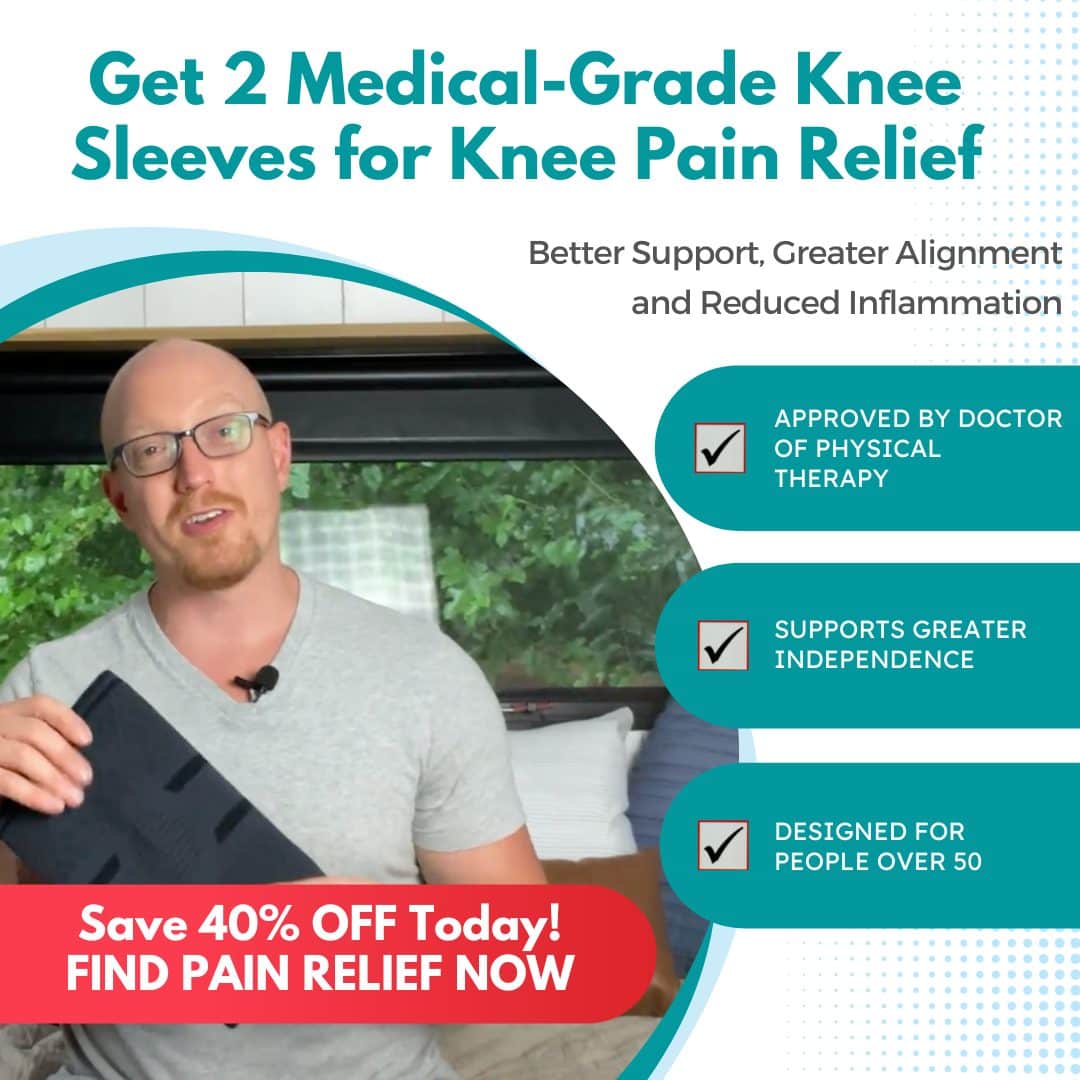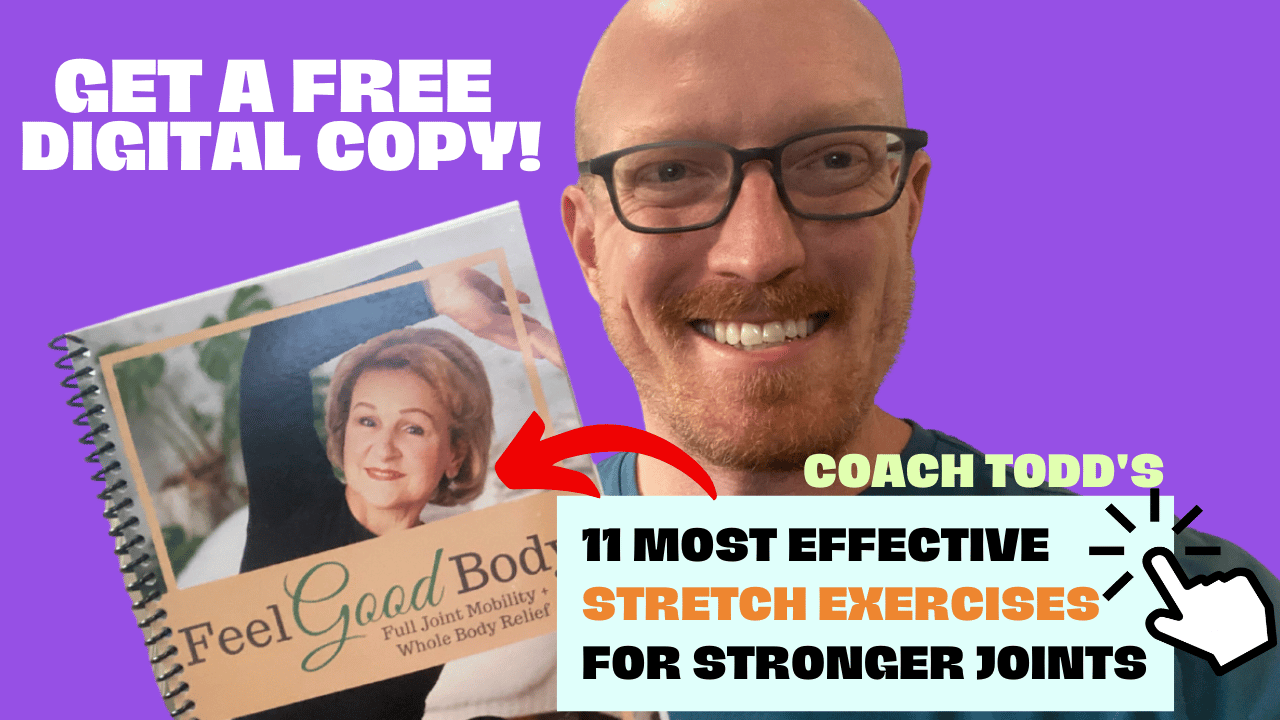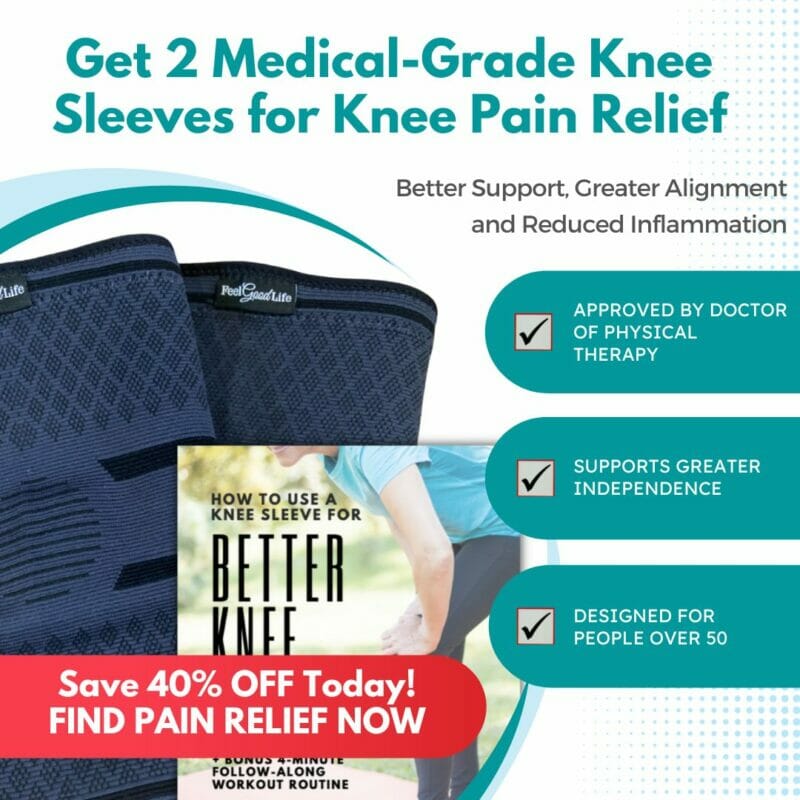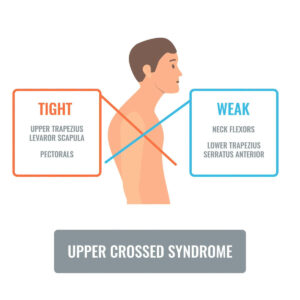Free download: Top 10 Natural & Easy Remedies for Joint Pain from Home. Learn these helpful remedies.
Estimated Reading Time: 11 minutes read
Are you struggling with your shoulder mobility? Do you have pain and tight shoulders when you try to move your arms? Limited shoulder range of motion?
Improving shoulder mobility is vital to be able to function properly, prevent injury, and even improve athletic performance.
There are many reasons why the shoulder joint, or glenohumeral joint to be more specific, may be experiencing tightness or discomfort.
Table of Contents
Causes of Shoulder Pain and Tightness

Poor shoulder mobility and tightness could be related to a shoulder injury (e.g., rotator cuff tear, tendinopathy, bursitis, or some other type of soft tissue injury), previous shoulder surgery, poor shoulder flexibility, or it could be the result of pain or poor mobility somewhere else in the shoulder complex.
Other common areas in the shoulder complex that may contribute to shoulder pain or limited range of motion include the thoracic spine (a.k.a. middle and upper back), scapula (a.k.a. shoulder blade), collar bone (a.k.a. clavicle), sternum (a.k.a. chest bone), or some other soft tissue and surrounding muscles attaching to these bones and joints.
Now the real question is, what are the best shoulder mobility exercises? If multiple parts of the shoulder complex can be involved and there are so many mobility exercises to choose from to improve shoulder flexibility…, how do you know which ones to do??
5 At-Home Shoulder Mobility Exercises and Stretches
Let’s take a look at how to improve shoulder mobility with these 5 recommended stretches:
1. The Doorway Stretch
This stretch mainly targets the muscles in the front of the chest and shoulders. This includes the pectoralis and anterior deltoid muscles.
These are shoulder muscles that naturally tend to get tight. This is especially common for those of us that have poor posture and like to slouch.
Remember though… the tighter your chest and anterior shoulder muscles are… the more your shoulders get pulled forward… and then you’re back to slouching!
Because of the way these muscles connect to the shoulders and arms, this tightness can cause shoulder pain.
So, How Do You Do the Doorway Stretch?

- Starting position: Stand tall in a doorway with your arms up like a goal post or like you’re saying, “I surrender!”
- Rest your arms on the doorway and lean forward until you feel a stretch.
- You can keep your feet slightly apart and side by side, or you can step forward into a small lunge during the stretch.
- Hold for a minimum of 30 seconds or even up to 1 full minute if you can tolerate it in order to get the best stretch.
Don’t forget to breathe! Deep breaths can be very helpful to relax more into the stretch.
Alternative to the Doorway Stretch:
There are other ways to replicate the doorway stretch. One of them involves stretching on a foam roller:
- Lay vertically on a foam roller with your arms in the same position as they were in the doorway.
- Repeat the same hold times and breathing techniques to get a good stretch.
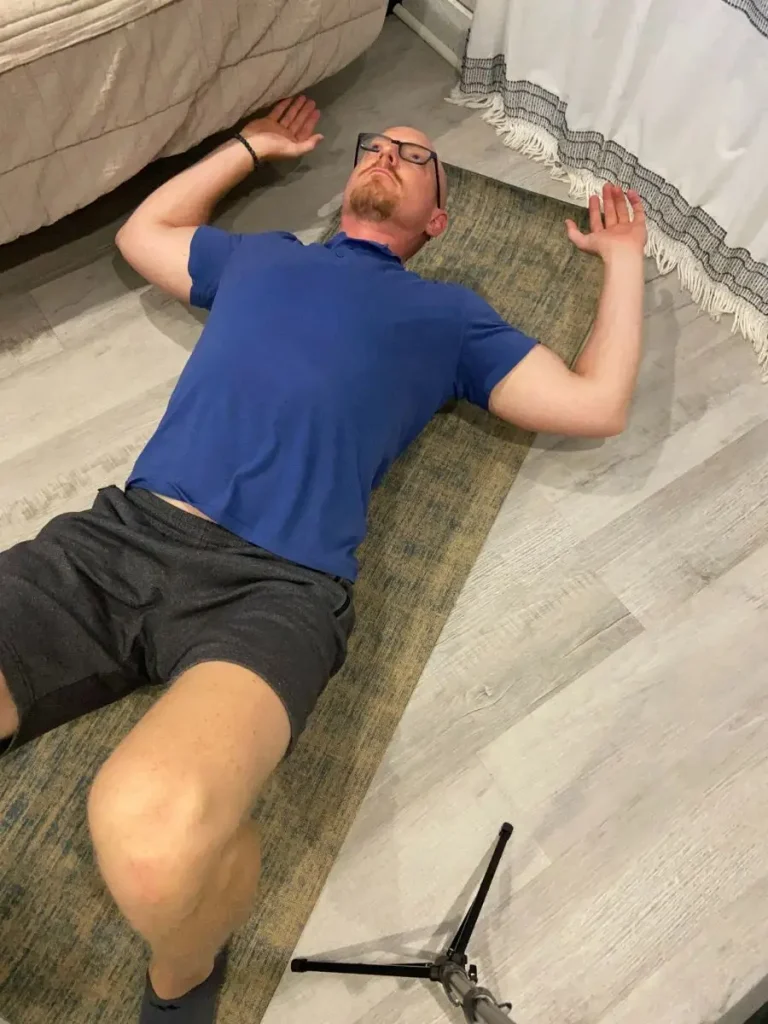
2. Shoulder Adduction Stretch
This is a great shoulder stretch to target the shoulder blade and rear shoulders, or your posterior capsule. You’ll target multiple muscles with this one as well, such as the posterior deltoid, rotator cuff, rhomboids and middle trapezius.
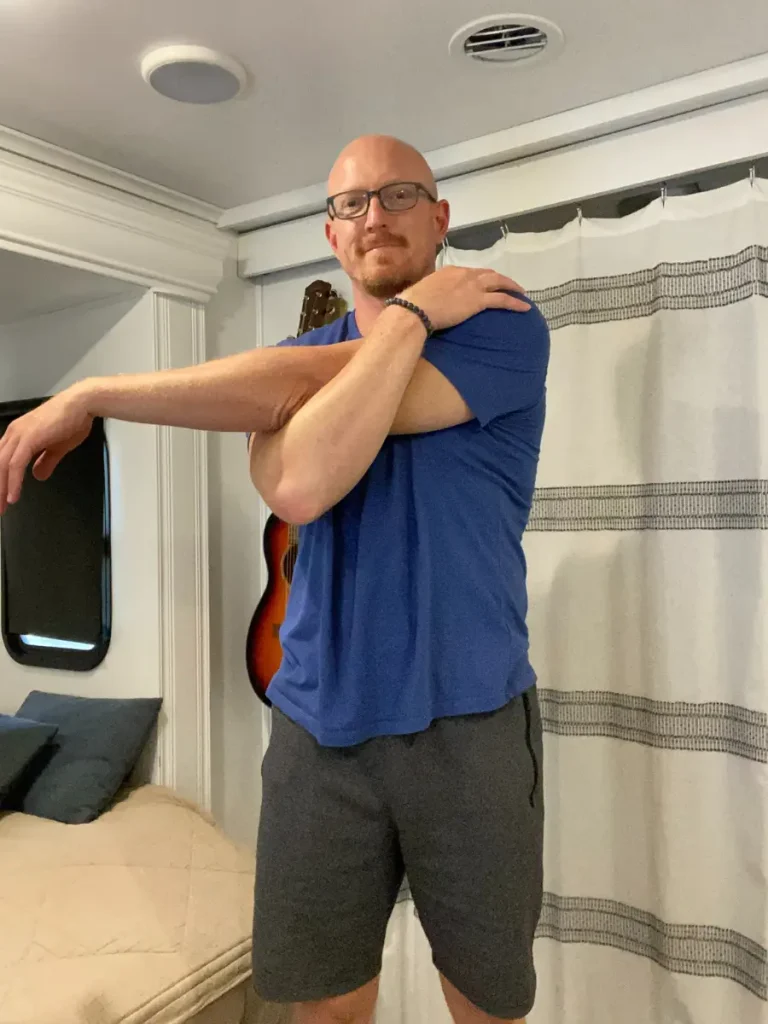
- Starting position: Reach the arm you’re trying to stretch across the body.
- Hook the opposite arm underneath and hold onto the arm being stretched.
- Give a gentle pull.
- The next step… hold and breathe!
3. Shoulder Internal Rotation Stretch (Behind the Back)
If you’re having trouble reaching behind the back because of shoulder tightness, then this is the stretch for you.
The Behind the Back stretch has you doing three separate movements: shoulder extension, adduction and internal rotation. This again means that multiple muscles in the shoulder will benefit from this stretch.
Examples of muscles targeted with this stretch include the pecs and the rotator cuff muscles, such as teres minor and infraspinatus.
- Starting position: Place a towel or strap over the shoulder and behind the back with the arm not being stretched.
- Place the arm to be stretched behind the back to grab the towel or strap.
- Slowly pull the towel or strap toward the ceiling with the arm that is positioned over the shoulder until a stretch is felt in the opposite shoulder.
- And don’t forget… long hold and breathing!
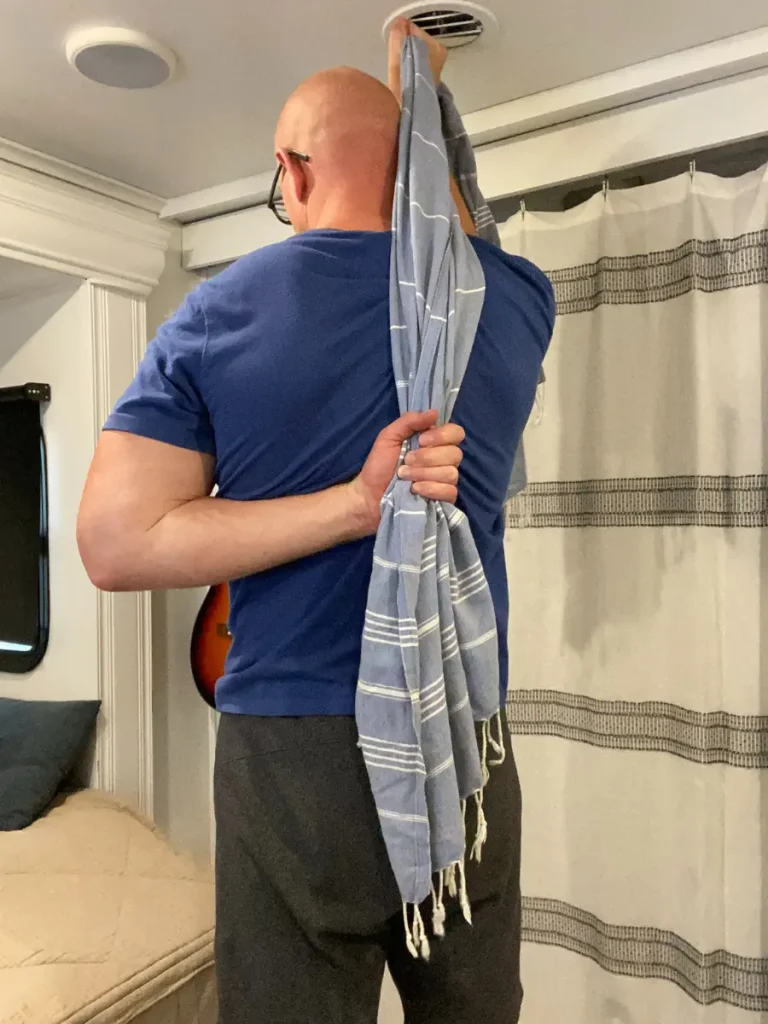
4. Upper Back Extension with Shoulder External Rotation
It’s very easy to forget that your shoulder and upper back mobility (or maybe lack of) feed off of each other.
Tight shoulders or shoulder discomfort can create problems in the thoracic spine, just like a tight or painful thoracic spine can lead to problems in the shoulders.
This stretch combines the two beautifully to improve your range of motion. Not only that, but this stretch will target multiple shoulder muscles, including the rotator cuff, such as the subscapularis, and the pecs again!
There are a couple of different ways to do this stretch to increase shoulder mobility:
A. In a Chair:
- Starting position: Sitting in a chair, place your hands behind your head like you’re lounging in the sun.
- Lean back until you can feel the chair against your back.
- As you lean back, stretch your chest to the ceiling and push your elbows back. Make sure to cradle your head in your hands so you don’t get a kink in your neck!
- Repeat the same hold times and breathing techniques as in the above stretch to achieve your best shoulder mobility.
B. Over a Foam Roller:
Back to the foam roller!
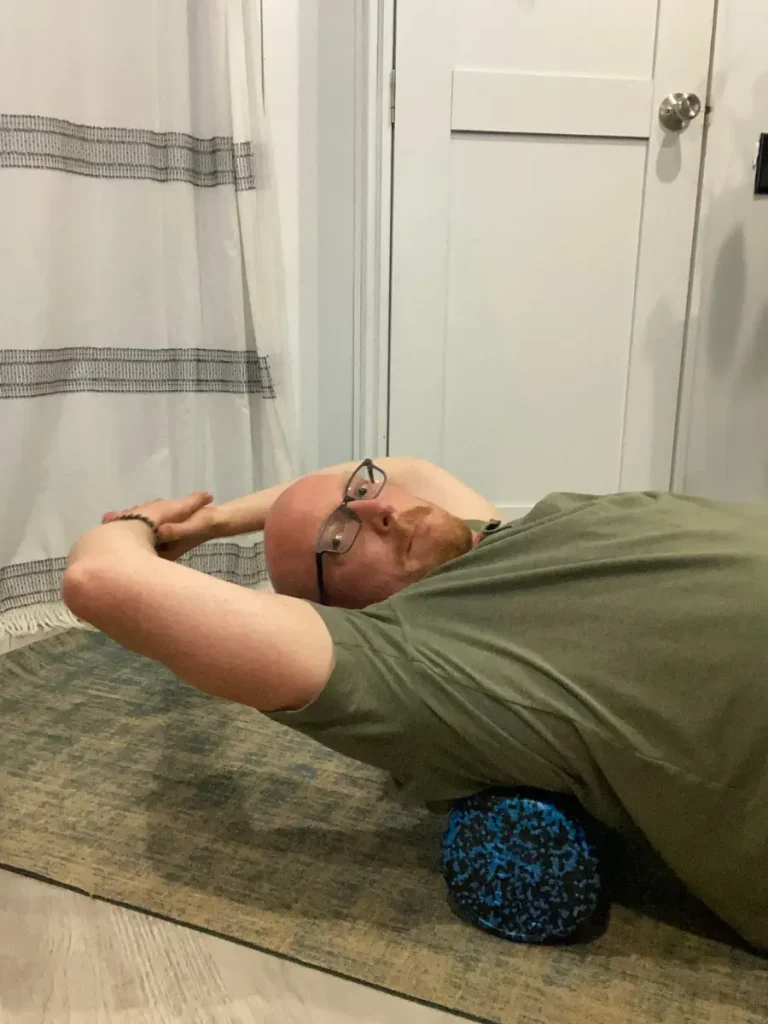
- Starting position: Sit in front of the foam roller (it is placed horizontal or perpendicular to you), then lean back until you’re lying over it.
- Lean back just like in the chair position mentioned above.
- Keep your head supported with your hands and stretch all the way back while pushing the elbows back at the same time.
- Hold the stretch and keep breathing!
5. Child’s Pose
This is such a versatile, fully body stretch that will also stretch the shoulders. It really targets your entire shoulder complex, plus the spine! One of the shoulder muscles that gets a great stretch from this is the latissimus dorsi.
- Starting position: Begin on your hands and knees.
- Slowly sit your bottom back towards your heels.
- At the same time, stretch your arms forward in front of you.
- Once in the full stretch, make sure to breathe deeply in and out. This will help you really sink into the stretch and get the most out of it.
- Hold for the same recommended time as the above stretches.
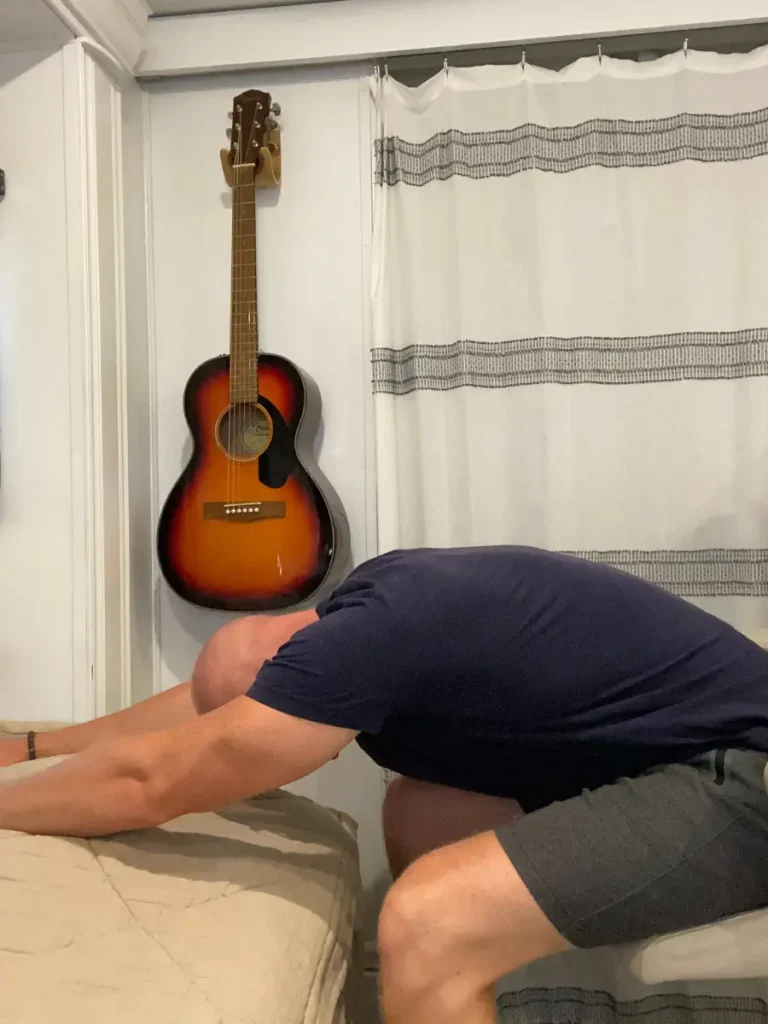
How to Get the Most Out of Your Shoulder Stretches

As mentioned above, to achieve the best shoulder mobility, you should aim to hold a stretch for a bare minimum of 30 seconds.
If you can tolerate it, keep holding for a total of up to 1 minute. If your shoulder mobility is really limited or the stretch is too intense, you may need to hold for a shorter time frame and repeat multiple times.
This may be 3 reps of 20 seconds or even 10 reps of 5-6 second holds.
It’s okay for a stretch to be uncomfortable, but make sure it isn’t painful!
Alternative Ways to Improve Shoulder Mobility Besides Exercises
We’ve taken a look at 5 recommended shoulder specific exercises, but is there another way to improve shoulder mobility? Yes, there is!
While stretching is a great way to target tightness in the shoulders and improve mobility, sometimes it’s necessary to use outside tools. Your shoulder tightness and decreased range of motion may be related to muscle knots or trigger points.
Trigger points are areas with hypersensitive nodules on a taut band of muscle. Many times, when you press on a trigger point it will cause pain.
This pain may even radiate to a different body part! Seeing as muscles attach to tendons, which then attach to bone (such as the bony shoulder joints), it’s not unrealistic to assume that pain from shoulder muscle trigger points can limit mobility and cause pain in the shoulder joints.
How Do You Treat Trigger Points?
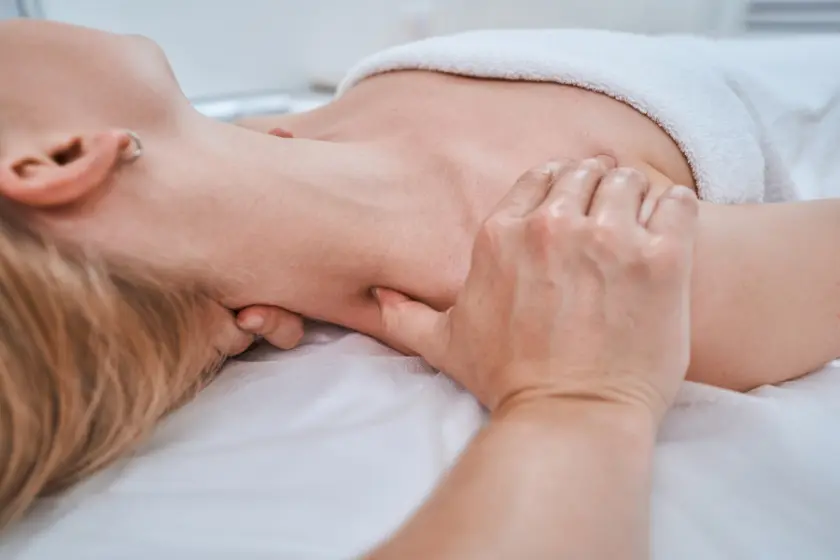
Hands on manual techniques, such as massage or trigger point release, are a great way to target and relieve trigger points.
Usually holding a sustained pressure over the trigger point will increase blood flow to the area and gradually relieve pain. A more specific medical treatment, called dry needling, has become a popular and successful way to treat trigger points.
While a medical professional, such as a physical therapist or massage therapist, is trained in some or all of the above techniques, how can you treat trigger points on your own?
Consider using tools such as a foam roller, massage gun or a Thera Cane. These tools will improve trigger point sensitivity and ultimately improve your shoulder mobility.
Final Thoughts
So, there you have it! The next time you’re feeling a need to move the arms and shoulders, give these 5 stretches a try at home.
In addition to the stretches, consider outside tools or medical treatment that can address deeper causes of shoulder pain and tightness, like one might experience with trigger points.
You’ll notice an improvement in shoulder mobility and range of motion almost immediately!
FAQ:
1. Who can evaluate and treat the above injuries and conditions?
Any medical professional trained to evaluate and treat orthopedic conditions. This may include a medical doctor with an orthopedics background, physical therapist, occupational therapist, or chiropractor.
If you have suffered an injury resulting in a fracture, seek medical attention at an ER immediately. Once the fracture has been stabilized and initially treated by a medical doctor, you may then be referred to one of the other specialists listed.
2. Will I need surgery for my injury or condition?
Unless in an emergency circumstance, which sometimes is the case with a fracture, surgery isn’t necessarily used.
Soft tissue injuries and problems related to natural wear and tear in the joints are typically managed conservatively first.
Surgery is only a last resort if you have failed conservative management and are experiencing debilitating pain and functional limitations.
3. Are there any stretches or motions I should avoid doing?
The answer to this depends on your shoulder issue and if a traumatic injury or surgery has been involved.
If you’re having general pain, not related to an injury or surgery, there aren’t any specific directions or stretches to avoid, unless they cause pain. Stretches can definitely be uncomfortable but should not be painful!
If you have had a traumatic injury or surgery, it is recommended to consult with your medical doctor and rehab specialist first before attempting stretches on your own.
Especially if a surgery was involved, there may be certain directions that you absolutely need to avoid at first in order to allow full healing to occur.
4. What do I do if the stretches hurt, or I can’t even get in the stretching positions?
If a stretch is hurting or you can’t get into the stretching position, you can first try to modify or alter the position of the stretch and range of motion you are stretching in.
You may also want to try the recommendation in the article suggesting shorter hold times and more repetitions of the stretch, which may make it more comfortable.
If you have tried the above suggestion and are still experiencing difficulty, and maybe even shoulder pain in general, consult with your medical doctor and they will likely refer you to a rehab specialist for further guidance and recommendations.
5. What are the most common shoulder injuries or conditions that can limit shoulder mobility?
– Rotator cuff tear
– Shoulder impingement
– Adhesive capsulitis or frozen shoulder
– Labral tear
– Biceps tendon tear
– Bursitis
– Tendinopathy/tendinitis or overuse injury of any muscle/tendon group in the shoulder complex
– Fracture of any bone connected to the shoulder complex (e.g., humerus, clavicle or collarbone, scapula or shoulder blade)
– Pain related to arthritis in the shoulder




